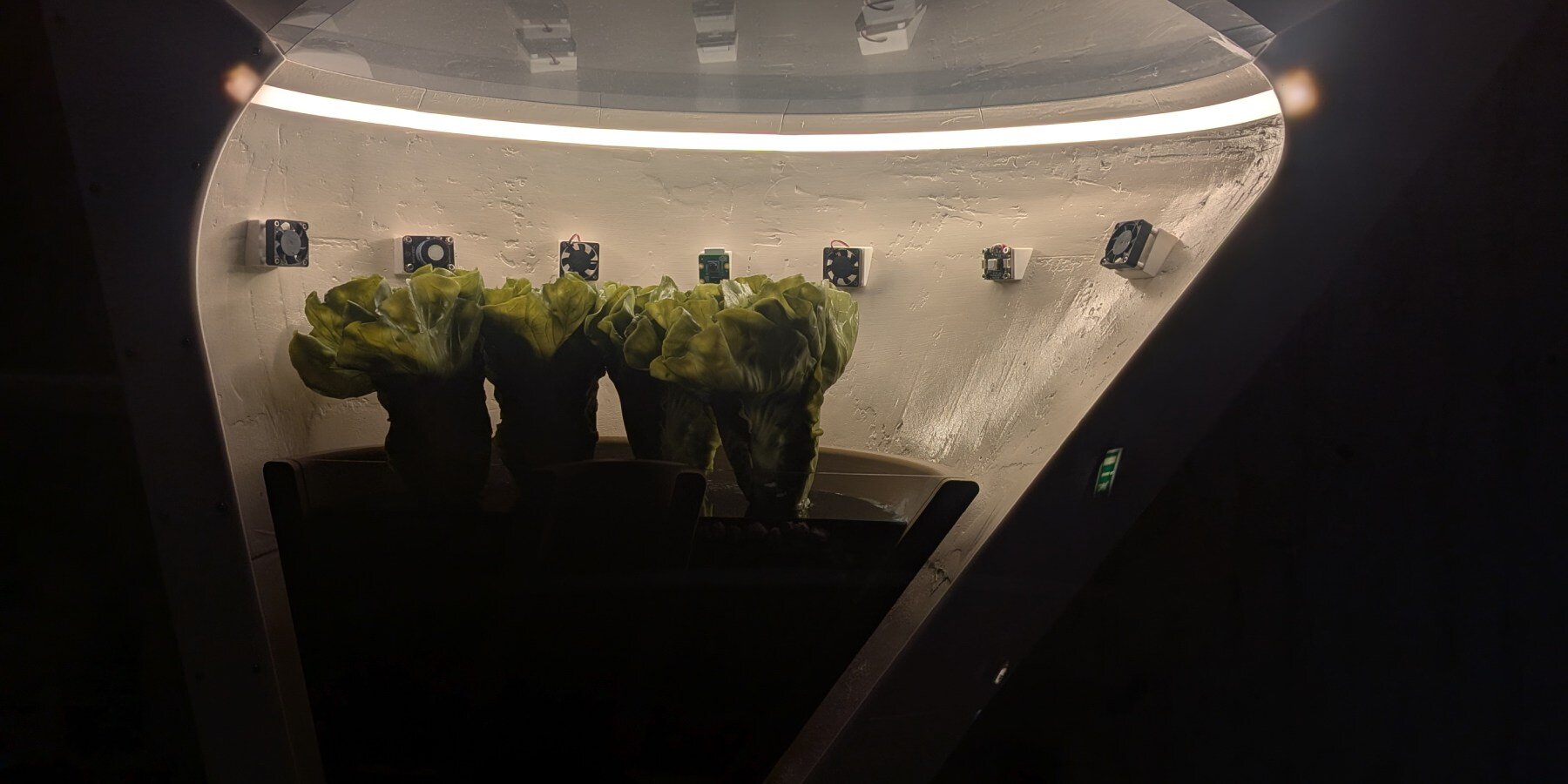space garden proposes an orbiting greenhouse at venice biennale
Among the more speculative contributions to the 2025 Venice Architecture Biennale’s main exhibition, Heatherwick Studio’s Space Garden imagines a celestial prototype for an autonomous, orbiting greenhouse. Developed in collaboration with the Aurelia Institute, the project challenges our perceptions of space and sustainability, considering how cosmic agriculture can be humanized and harnessed through biophilic space design to enhance life on Earth. ‘Space Garden started as an experiment in humanising space, by growing the plant species that make small spaces work better for your mental health,’ says Thomas Heatherwick, ‘but ultimately it’s also about using the unique ‘backyard’ of low Earth orbit to benefit life on our planet.’
The model stands with a somewhat surreal presence amid the brick walls of the Corderie dell’Arsenale, shaped as a cluster of 30 growth pods stemming from a luminous central chamber representing a pomegranate tree — one of the earliest plants to be cultivated by humans. Each pod, with an individually controlled climate, contains a different plant species, fungi, or algae grown from a community garden on Earth. They open and close in response to environmental conditions, shielding themselves from debris or rotating to capture sunlight via their photovoltaic cells.

Space Garden on view at Venice Architecture Biennale | image by Nik Eagland
heatherwick studio & aurelia institute humanize nature in space
‘I’m fascinated by outer space,’ says Thomas Heatherwick. ‘But, maybe surprisingly, not in its own right. Instead, by its potential to help humans live better lives on Earth.’ For Heatherwick, and Aurelia Institute’s founder and space architect Dr. Ariel Ekblaw, the project sits within a broader interest in Offworlding, which the team has been continuing to develop over the years. This idea, which is set to launch with real-world applications in the near future, centers on shifting manufacturing and resource-heavy industrial processes into orbit to ease the pressure on terrestrial systems on Earth, protecting it from pollution.
The project also fits closely with the curatorial direction of this year’s Biennale — themed Intelligens. Natural. Artificial. Collective — which explores how these different forms of intelligence can be brought together to confront systemic challenges facing humanity. Space Garden enters this dialogue by proposing a living, automated environment that bridges engineered systems and botanical life. ‘The unique environment of space offers us an extraordinary opportunity to design for humanity’s greatest challenges on Earth,’ says Ekblaw.

completed by Heatherwick Studio and Aurelia Institute | image by Nik Eagland
testing crop growth in space while protecting the earth
The garden here is presented as part of a reciprocal system between the domains of the cosmos and the Earth. Research shows that certain materials and biological processes perform better in microgravity environments: the manufacture of pharmaceuticals, for example, or the development of new tissue cultures. But historically, the design of space habitats has focused almost exclusively on survival; keeping humans alive in hostile environments. With Space Garden, Heatherwick Sutdio and Aurelia Institute push that conversation further, asking what it would take not just to survive in space, but to ultimately live well. In the same way, they consider how life in space might help humans on Earth to reconnect with nature, even in the most extreme environments.
Although Space Garden presents a model design prototype to pose large questions, its underlying vision is backed by applied research and a stated intent to build a functioning prototype. The team is already developing internal technical components in partnership with Daikin Industries, focusing on air and water management systems adapted for space. A section model of one pod has also been built at Autodesk’s Technology Center in Boston as part of Aurelia’s research program. The system, once implemented, will be used for testing autonomous horticulture in space to enable longer space exploration missions, and to support better agricultural strategies in resource-constrained environments on Earth.

a cluster of 30 growth pods | image by Marco Zorzanello, courtesy of La Biennale di Venezia

luminous central chamber | image by Marco Zorzanello, courtesy of La Biennale di Venezia

onsidering how cosmic agriculture can be humanized through biophilic space design | image by Nils Koenning

the pods open and close in response to environmental conditions | image by Nils Koenning

each pods contains a different plant species, fungi, or algae | image © designboom

the Space Garden is part of a reciprocal system between the cosmos and the Earth | image © designboom

image © designboom
project info:
name: Space Garden
architect: Heatherwick Studio | @officialheatherwickstudio, Aurelia Institute | @aurelia_institute
location: Corderie dell’Arsenale, Venice, Italy
program: Venice Architecture Biennale | @labiennale
dates: May 10th — November 23rd, 2025
The post heatherwick studio’s space garden at venice biennale orbits earth for enhanced human living appeared first on designboom | architecture & design magazine.


